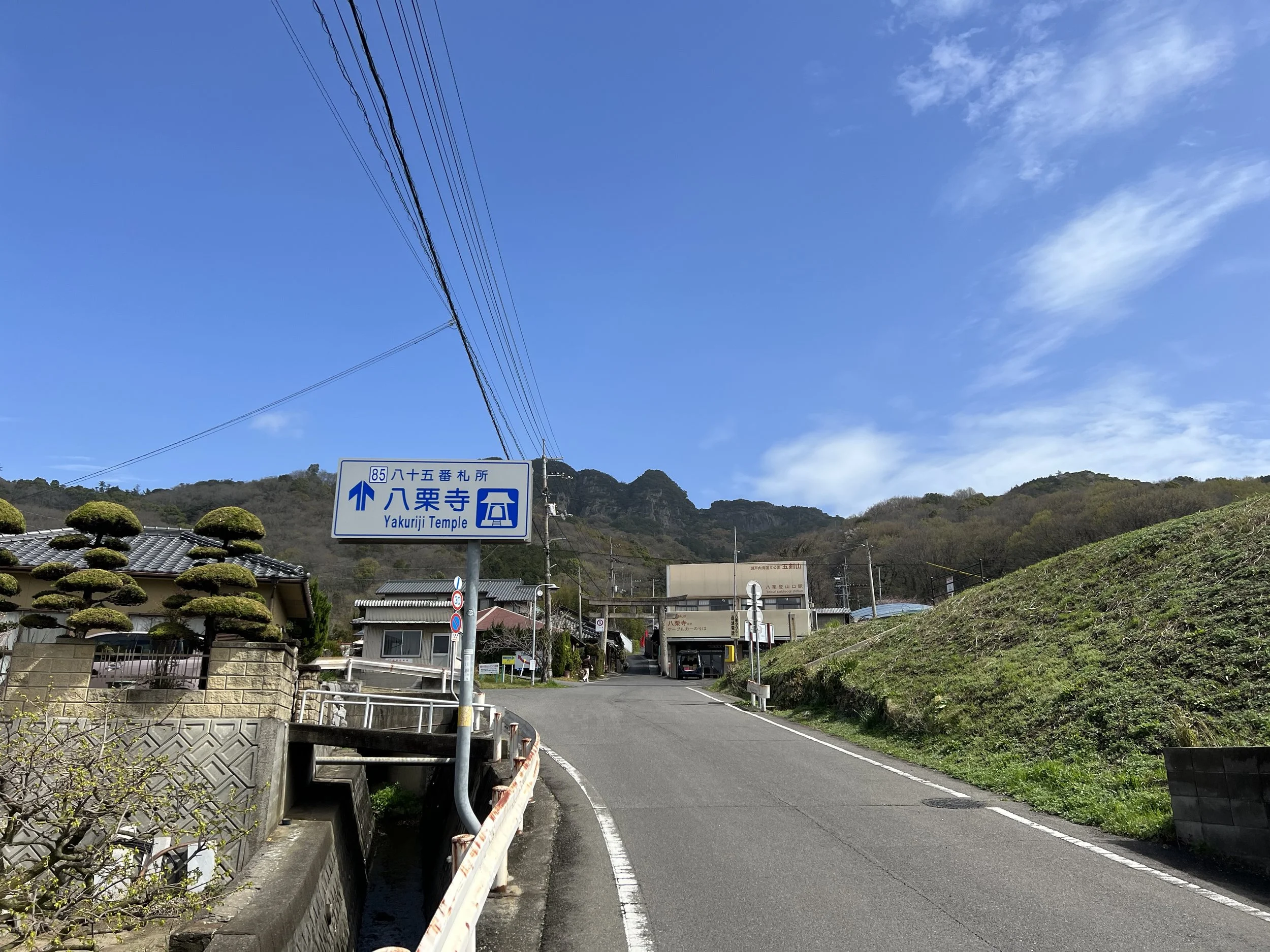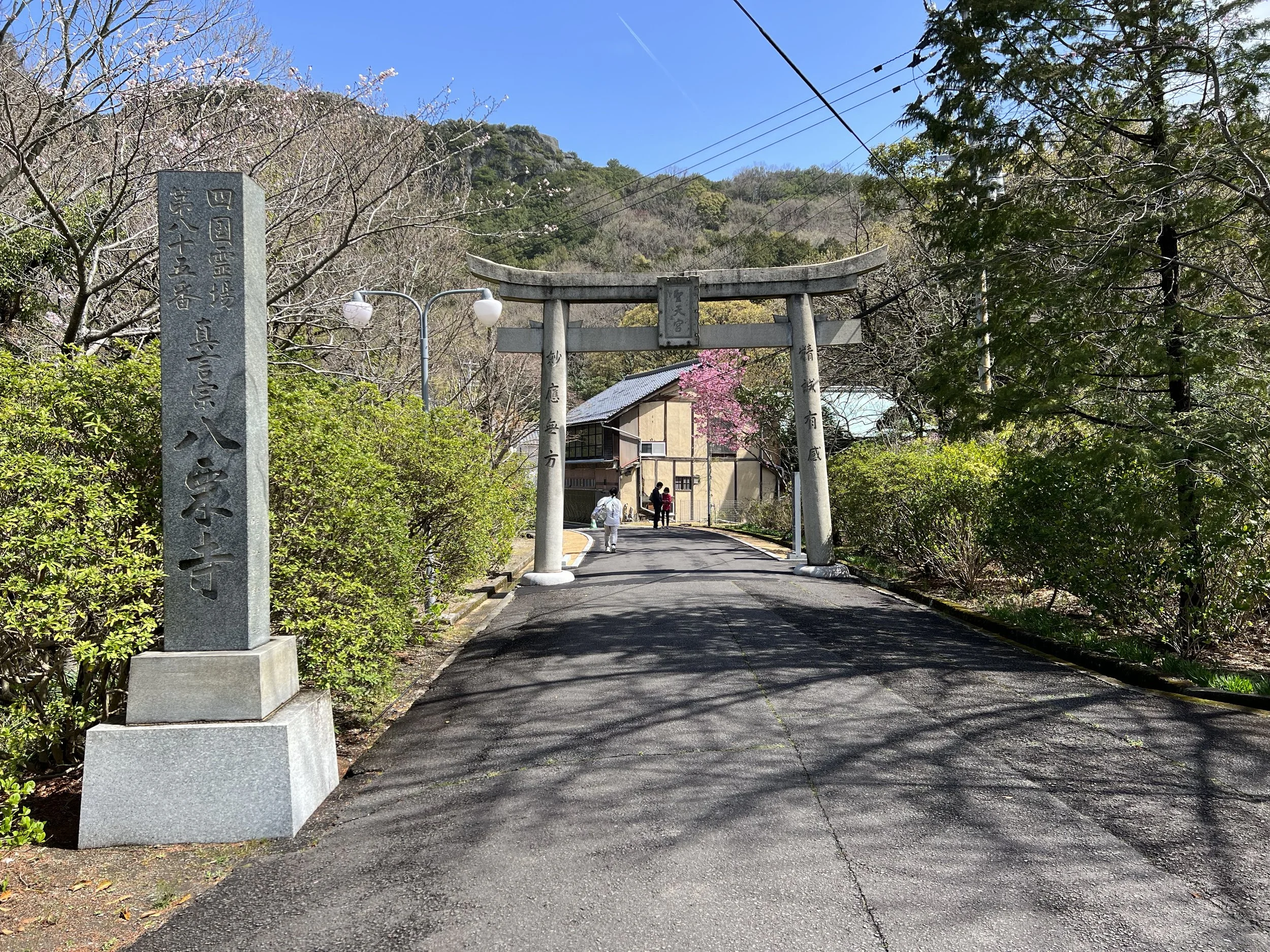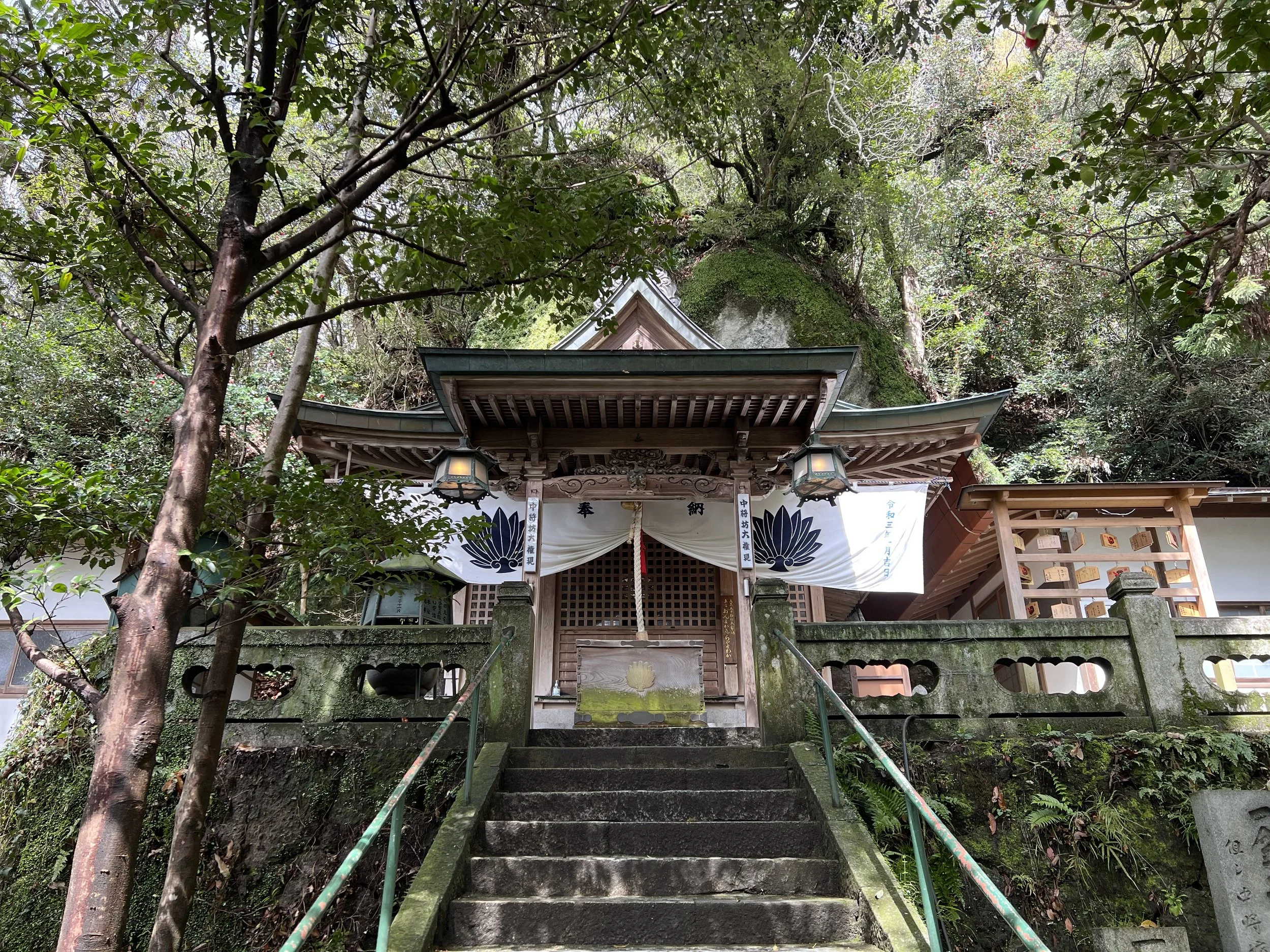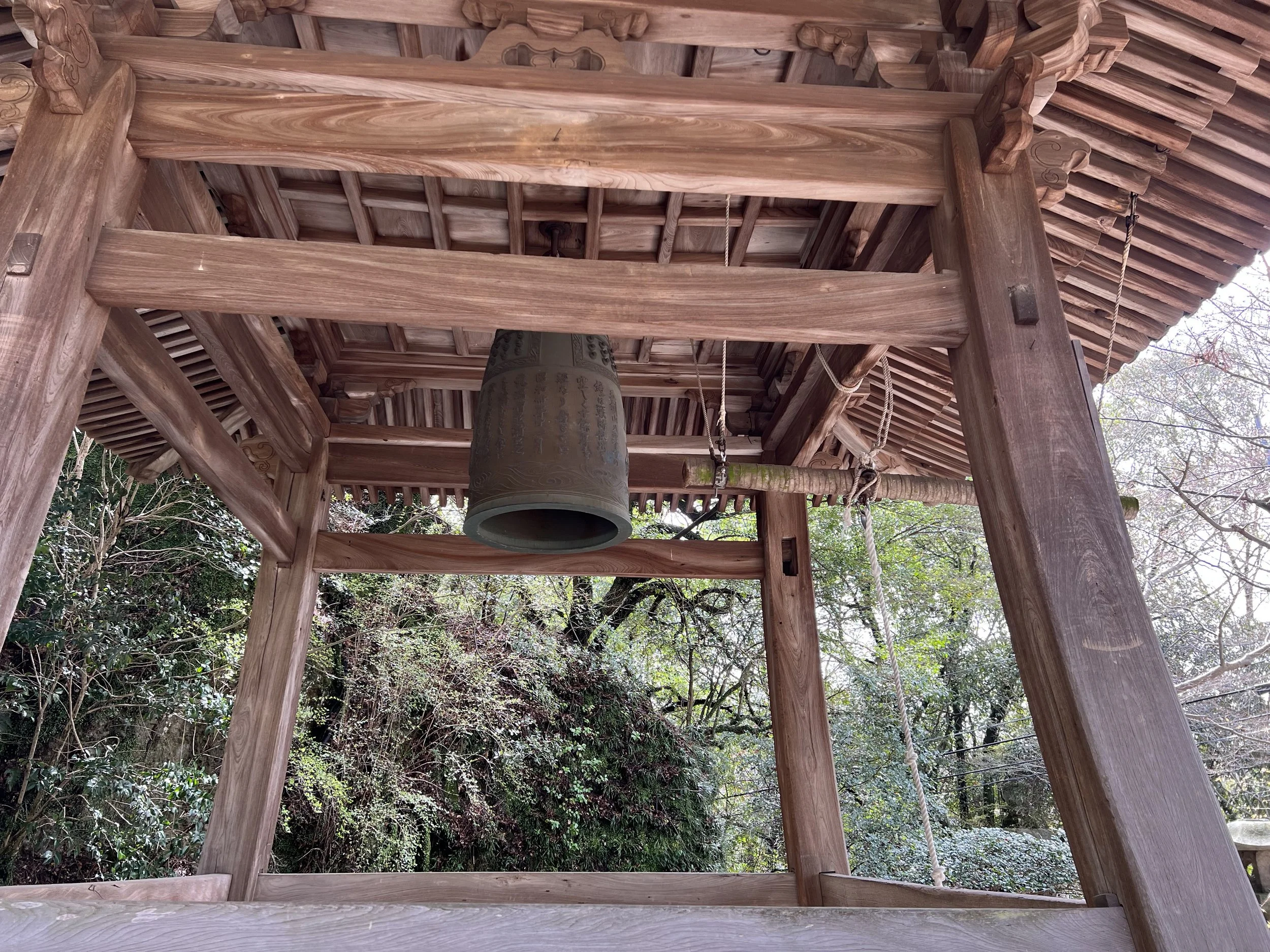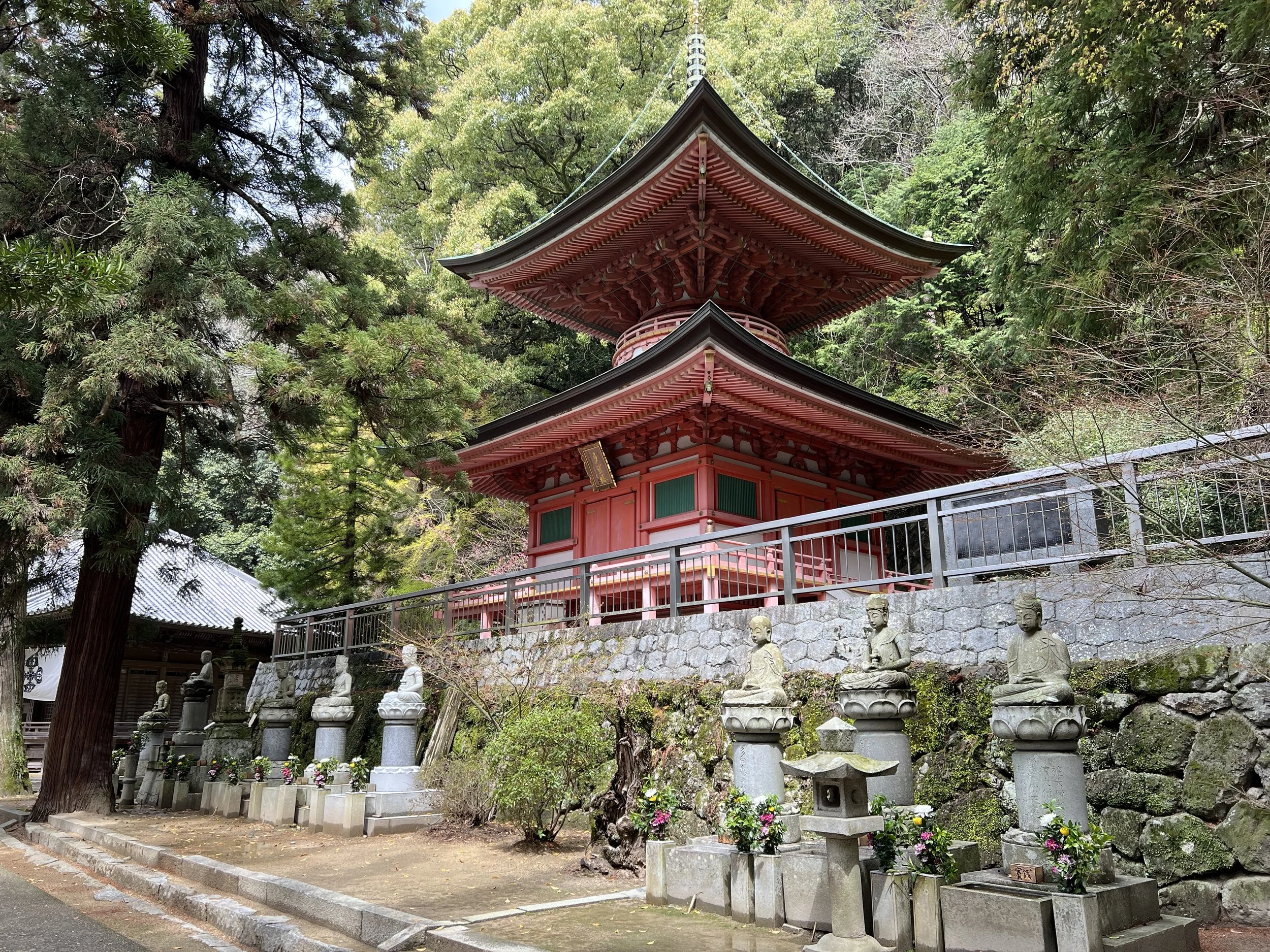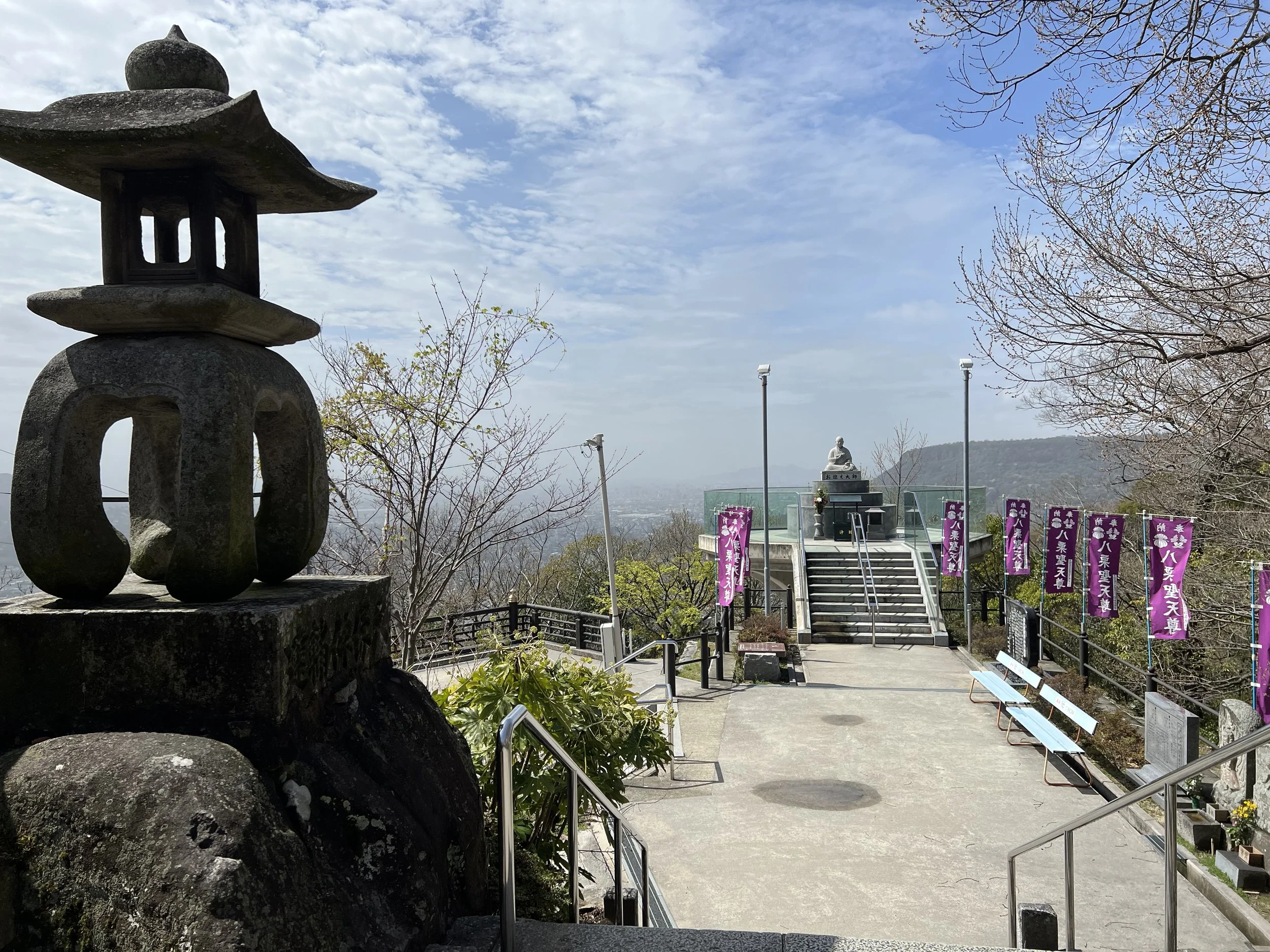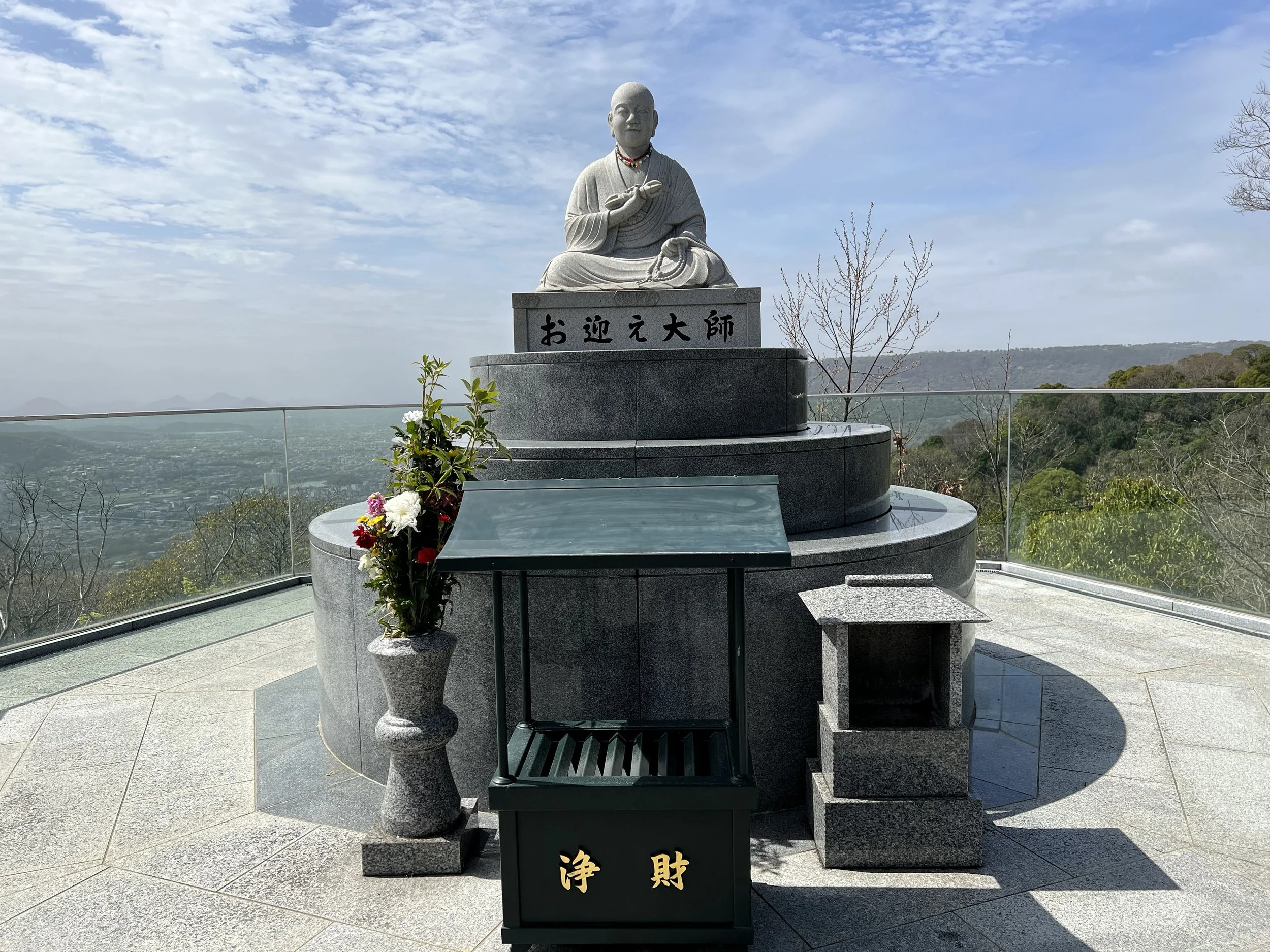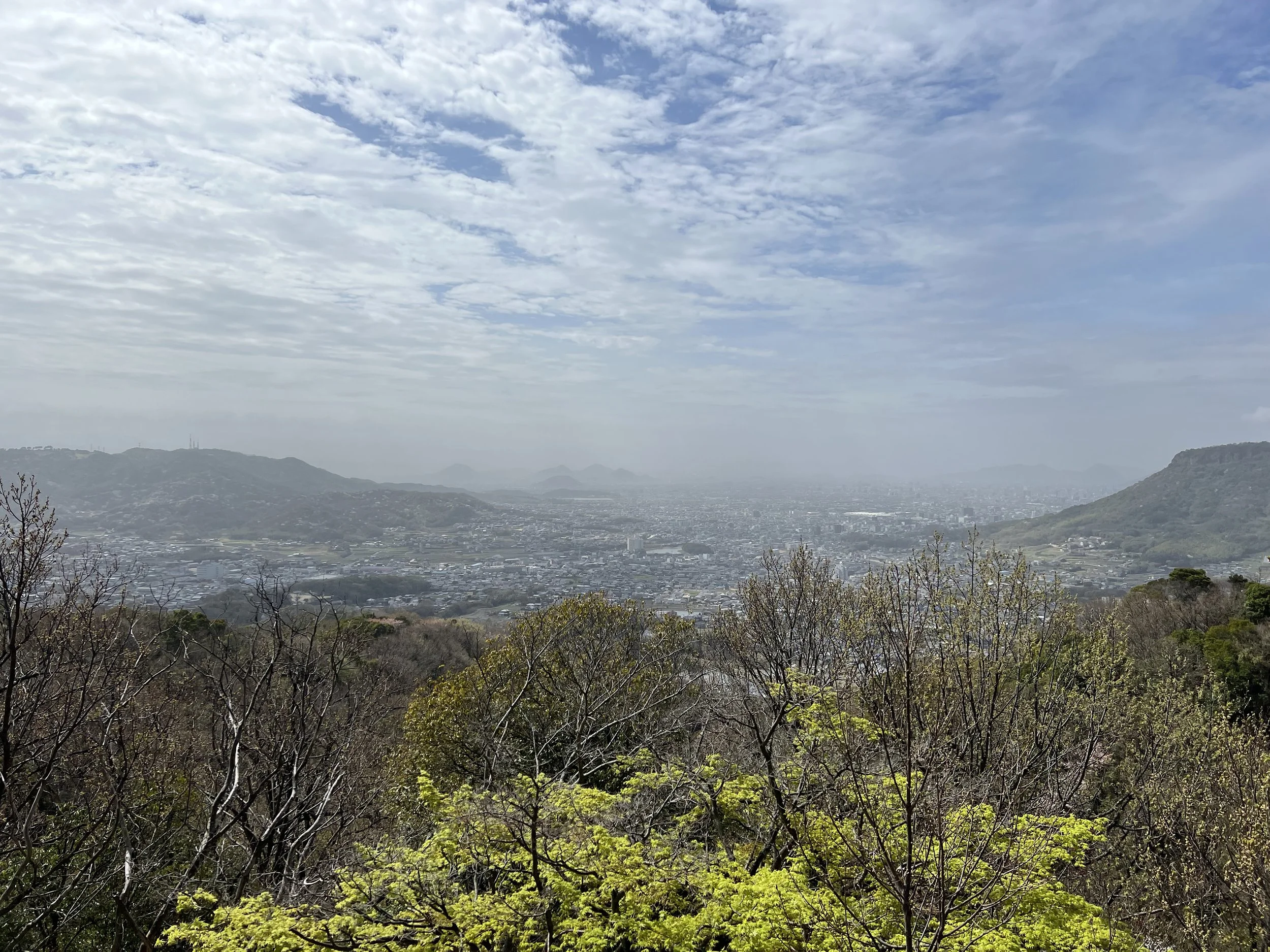Shikoku Henro - Yakuri Temple - Kagawa, Japan
My original plan wasn’t actually to visit the temple—it was to try a popular udon restaurant about halfway up the mountain. But since I was already here, I figured, why not go all the way? From Kawaramachi Station, I took the train to Yakuri Station, and from there began my walk toward Yakuri Temple (Temple 85).
The route winds steadily up the mountain along a paved road, wide enough for a small car. While there’s an option to take the Yakuri Cable Car for those who prefer to save some effort, I chose to hike the full distance instead. It was a pleasant climb, with views gradually opening over Takamatsu City and the shimmering Seto Inland Sea below.
As I neared the top, I could already hear the rhythmic ringing of the temple bell echoing through the trees. Yakuri Temple is a popular pilgrimage stop, and several guided Henro groups were gathered in prayer when I arrived. Their quiet chanting added a reverent energy to the atmosphere.
Wandering through the grounds, I reflected on the rich history and legends tied to this place. Long before it became known as Yakuri Temple, it was called Hakkokuji—the “Eight Country Temple.” During the Enryaku era (782–806), before travelling to China to study, Kobo Daishi climbed this very mountain. He planted eight roasted chestnuts here to predict the success of his journey. When he returned years later, he discovered that the roasted chestnuts had miraculously sprouted—a sign considered impossible. In honour of this wonder, the temple’s name was changed from Hakkokuji to Yakuriji, meaning “Eight Chestnuts Temple.”
Another legend tells of Kobo Daishi performing sacred rituals on this mountain, where five swords descended from heaven. The mountain’s guardian deity, Zao Gongen, appeared and declared, “This mountain is a sacred place for Buddhism.” Kobo Daishi buried the swords, carved a statue of Dainichi Nyorai, and named the mountain Gokenzan—Five Sword Mountain. Together, these stories give Yakuri Temple a deep spiritual identity rooted in both myth and devotion.
The sound of the temple bell echoed continuously. It’s said that the ringing clears the mind of negativity, brings peace, and calls upon the deity’s presence. I stood for a while listening, watching pilgrims and visitors take turns striking the great bronze bell before stepping quietly away.
After exploring and offering my prayers, I began my descent. The downhill walk was easy and peaceful, with beautiful glimpses of the city below. I finally stopped at the udon restaurant I had come for in the first place—and after the hike up such a sacred mountain, that bowl of noodles tasted especially satisfying.
History & Background
#85 Yakuri Temple 八栗寺 - Founded by Kukai in the early 9th century on Mount Gokenzan, Yakuriji is deeply tied to mountain worship and esoteric Buddhist practice. Its name, meaning “Eight Chestnuts,” comes from a legend that Kukai planted chestnuts here to pray for his teachings’ success; today, the temple is famed for its sweeping views of Takamatsu and the Seto Inland Sea.
To see my progress on the full Shikoku Henro Pilgrimage, visit my Shikoku Henro - Temple List & Progress..
Getting There
From Takamatsu’s Kawaramachi Station, take the Kotoden Shido Line to Yakuri Station (about 25 minutes). From the station, it’s approximately a 3 km walk uphill along a paved road to the temple.
For those who prefer an easier option, the Yakuri Cable Car operates between the lower station and the temple entrance, offering a scenic ride up the mountain. Shuttle buses may also be available seasonally between the lower temple area and the cable car station.
Route Overview
Distance: 6.48 km (Yakuri Station)
Total elevation gain: 268 m
Duration: 1 hr 28 min (with breaks 1 hr 55 min)
Difficulty: Easy
Cost Breakdown
Train: Kawaramachi Station → Yakuri Station— ¥360
Food: ¥1,180
